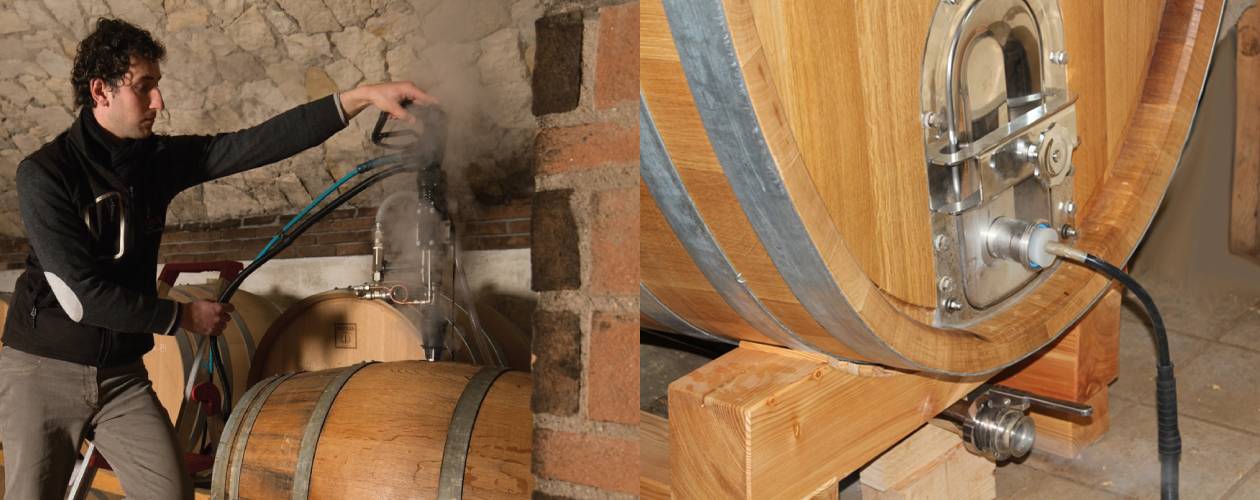The Ultimate Guide to Wine Barrel Cleaning: Techniques and Tips
Proper cleaning and maintenance of wine barrels are essential for winemakers aiming to produce exceptional wines.
The cleanliness of barrels directly influences the quality, flavour, and ageing potential of the wine. In this comprehensive guide, we will delve into the techniques and tips for effective wine barrel cleaning. Whether you are a seasoned winemaker or an enthusiast looking to enhance your wine production knowledge, this guide will provide valuable insights to ensure your barrels are spotless and your wines are of the highest calibre.
Keywords: wine barrel cleaning, wine-making techniques, wine-making tips, winemakers, wine quality, wine flavour, ageing potential, comprehensive guide, winemaker, wine production
1. Importance of Wine Barrel Cleaning
Cleaning wine barrels is not merely a hygiene practice; it is crucial for maintaining the quality and integrity of the wine. Residual sediments, microbes, and tannins left behind in barrels can impact the flavour profile and contribute to off-flavours. Proper cleaning ensures that each vintage is true to its intended characteristics, allowing the unique qualities of the grapes to shine through.
2. Techniques for Cleaning Wine Barrels
- Emptying and Rinsing: Start by emptying the barrel of any remaining wine or sediments. Rinse the barrel thoroughly with hot water, ensuring all residue is removed.
- Scrubbing and Brushing: Utilise a barrel brush or scrubbing tool to clean the interior surfaces of the barrel. Pay special attention to the staves, head, and bung areas to remove any stubborn residues.
- Sanitising: After cleaning, sanitise the barrel using a suitable sanitising agent such as high-temperature superheated dry steam vapour to eliminate bacteria, moulds, and other microorganisms. Follow the manufacturer's instructions for proper dilution and contact time.
3. Cleaning Agents and Solutions for Wine Barrels
- Sulfur Dioxide (SO2): A commonly used cleaning agent due to its antimicrobial properties. It effectively kills bacteria, moulds, and wild yeast. Use caution and follow recommended concentrations to avoid affecting the wine's flavour.
- Citric Acid: A natural cleaning agent that helps remove scale, stains, and mineral deposits from barrels. It is particularly effective against tartrate build-up. Dilute citric acid in water and allow it to soak in the barrel before rinsing.
- Steam Vapour: An environmentally friendly option of natural sanitising agent that is made of steam with little water moisture content. It is the most reliable and safest method available and accessible anytime.
4. Steam Cleaning Methods for Wine Barrels
Steam cleaning is a powerful method for sterilising and deep cleaning wine barrels. The high temperature and moisture effectively kill bacteria, moulds, and other microorganisms. It also helps remove stubborn residues and tartrate deposits. Ensure proper safety precautions and follow equipment manufacturer guidelines when using steam cleaning methods.
5. Preventing Mould and Mildew in Wine Barrels
Mould and mildew can develop in damp and unclean wine barrels, leading to musty odours and compromised wine quality. To prevent mould growth, ensure the barrels are completely dry before storage, maintain proper cellar humidity levels, and implement regular cleaning and sanitisation routines.
6. Barrel Brushing Techniques for Wine Barrel Cleaning
Barrel brushing is an essential step in thorough cleaning. Use a barrel brush with stiff bristles to scrub the interior surfaces, paying attention to hard-to-reach areas. Rotate the brush and apply firm pressure to remove any residues. Rinse the barrel thoroughly after brushing.
7. The Impact of Barrel Aging on Wine Flavor and Cleaning Needs
Barrel ageing imparts unique flavours and characteristics to wines. However, it also presents specific cleaning challenges. The ageing process can create tartrate crystals and wine sediment, requiring specialised cleaning techniques to ensure proper hygiene without compromising the desired flavours and aromas.
Conclusion
Cleanliness is the cornerstone of exceptional winemaking. By implementing proper wine barrel cleaning techniques, winemakers can maintain the quality, flavour, and ageing potential of their wines. Regular cleaning, sanitisation, and preventive measures are crucial in preserving the integrity of wine barrels and producing outstanding vintages. With the knowledge gained from this ultimate guide, you are well-equipped to embark on a journey of pristine wine barrel cleaning and elevate your winemaking endeavours.

Talk to our Wine Barrel Cleaning consultant today to achieve wine bottling hygiene today
Talk to us today at 1300 577 722 or download Wine Barrel Cleaning Brochure.
Download Wine Barrel Cleaning brochure.


